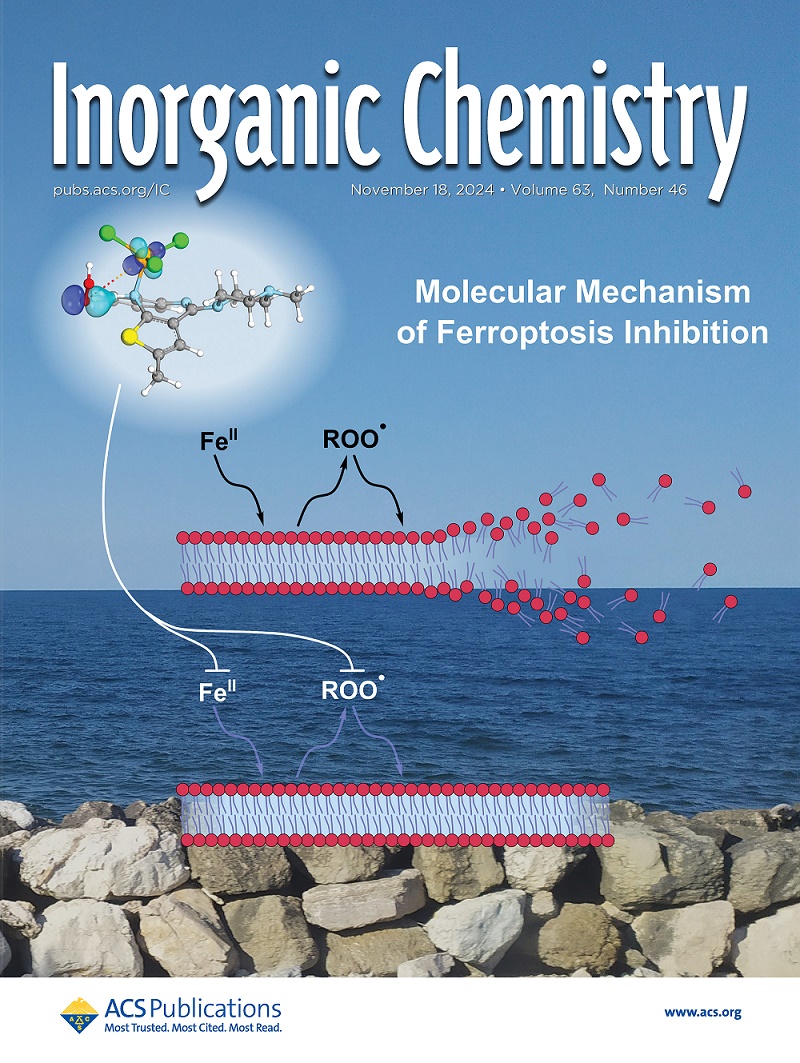SCSC Transformation of Heterobimetallic 2D MOF to Homometallic 2D MOF via Solvent-Assisted Removal of Second Metal Component: An Add-and-Remove Strategy
IF 4.3
2区 化学
Q1 CHEMISTRY, INORGANIC & NUCLEAR
引用次数: 0
Abstract
Constructing high-dimensional metal–organic framework (MOF) materials that cannot be reached by direct methods is demanding. We herein report the construction of a two-dimensional (2D) copper(I) iodide MOF via an add-and-remove strategy of a second metal component (HgI2). The networking reaction of an O2S2-macrocycle (L) with CuI via a bridging exocyclic coordination under the direct condition was unsatisfactory because of its one-dimensional (1D) product {[(μ4-Cu3I3)(L)2]·2CH3CN·CH2Cl2}n (1) with low yield. Alternatively, the self-assembly of L with a mixture of CuI and HgI2 allows the generation of a 2D heterobimetallic Cu(I)/Hg(II)-MOF {[Cu2(μ-Hg2I4)(L)2(CH3CN)2I2]·toluene}n (2, brick wall) cross-linked by μ-Hg2I4 square dimers via the bridging exocoordination mode. When the crystals of 2 were immersed in methanol, the crystals were converted to a desired 2D Cu(I)-MOF [(μ4-Cu2I2)(L)2]n (3, square grid) by the replacement of the cross-linker μ-Hg2I4 with μ4-Cu2I2 via the solvent-assisted etching. Interestingly, this 2D–[1D]*–2D conversion process that proceeds in an SCSC mode is completed by the dimerization of open coordinating site CuI* to form a μ4-Cu2I2 node (2CuI* → Cu2I2), preserving the 2D dimensionality. The conversion process is discussed based on PXRD, EDX, AFM, TGA, and NMR data.

求助全文
约1分钟内获得全文
求助全文
来源期刊

Inorganic Chemistry
化学-无机化学与核化学
CiteScore
7.60
自引率
13.00%
发文量
1960
审稿时长
1.9 months
期刊介绍:
Inorganic Chemistry publishes fundamental studies in all phases of inorganic chemistry. Coverage includes experimental and theoretical reports on quantitative studies of structure and thermodynamics, kinetics, mechanisms of inorganic reactions, bioinorganic chemistry, and relevant aspects of organometallic chemistry, solid-state phenomena, and chemical bonding theory. Emphasis is placed on the synthesis, structure, thermodynamics, reactivity, spectroscopy, and bonding properties of significant new and known compounds.
 求助内容:
求助内容: 应助结果提醒方式:
应助结果提醒方式:


